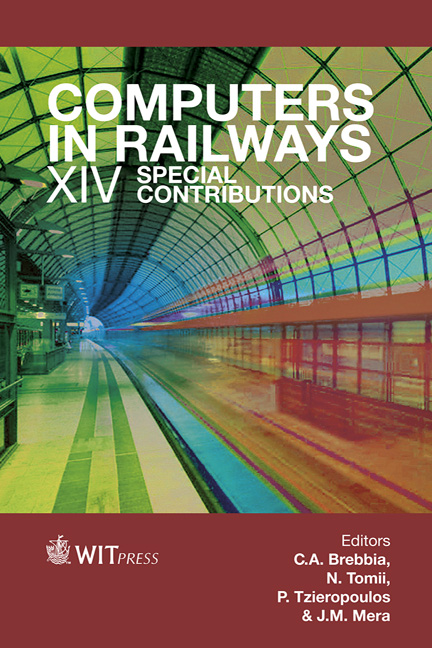Estimating Railway Infrastructure Project Cost From Transferring Nominal Price To Real Price By Considering The Working Time Possessions
Price
Free (open access)
Transaction
Volume
155
Pages
12
Page Range
3 - 14
Published
2015
Size
921 kb
Paper DOI
10.2495/CRS140011
Copyright
WIT Press
Author(s)
R. Li, A. Landex, K. B. Salling, S. N. Madsen, O. A. Nielsen
Abstract
The purpose of the paper is to estimate a railway project construction cost based on the nominal market price. Currently, estimation of project costs within railway infrastructure procurement is particularly challenging due to: 1) construction costs highly depend on possession timeframes and duration and 2) railway construction work costs are not transparent in the market.
This paper suggests separating the costs into 3 sub-categories: materials, labour and machinery. Evidently, the materials are further broken down into subcomponents, which then remains fixed, whereas the cost of labour and machinery are varying depending on the working time possessions presented through the closure of the railway line. The effective working hours, type of construction work and construction speed are used as constraints to ensure the track closure plan remains feasible.
To demonstrate the approach, a Danish railway construction project, the new line to the fixed link across Fehmarn Belt, is introduced, where it is shown that the non-material cost is about 19% of the total expenditure. By assuming three sets of track blocking scenarios with the same amount of construction work it is proven that, given an optimal track closure plan, the overall cost can be reduced by 2.7%. It can be concluded that our approach using an optimal working possession plan can identify the low-cost track closures.
Keywords
cost estimation, Greenfield-market price, working possession, track closure, phase-based planning, railway infrastructure project, construction project planning





